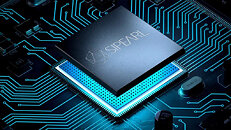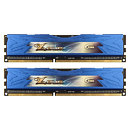Bolt Graphics Announces Zeus GPU for High Performance Workloads
Bolt Graphics announces Zeus, a completely new GPU design for high performance workloads including rendering, HPC, and gaming. Zeus addresses performance, efficiency, and functionality limitations with legacy GPUs.
Zeus is orders of magnitude faster than any other GPU in key workloads. Users can gain 10x in rendering performance, 6x in FP64 HPC workload performance, and 300x in electromagnetic wave simulations. Users running these types of demanding workloads need access to large amounts of memory. Bolt brings expandable memory to GPUs, for the first time, which allows users to increase their memory up to 384 GB in a PCIe card, and up to 2.25 TB per Zeus in a 2U server. A rack of Zeus 2U servers can be configured with up to 180 TB of memory, 8x larger than legacy GPUs.
Zeus is orders of magnitude faster than any other GPU in key workloads. Users can gain 10x in rendering performance, 6x in FP64 HPC workload performance, and 300x in electromagnetic wave simulations. Users running these types of demanding workloads need access to large amounts of memory. Bolt brings expandable memory to GPUs, for the first time, which allows users to increase their memory up to 384 GB in a PCIe card, and up to 2.25 TB per Zeus in a 2U server. A rack of Zeus 2U servers can be configured with up to 180 TB of memory, 8x larger than legacy GPUs.

















